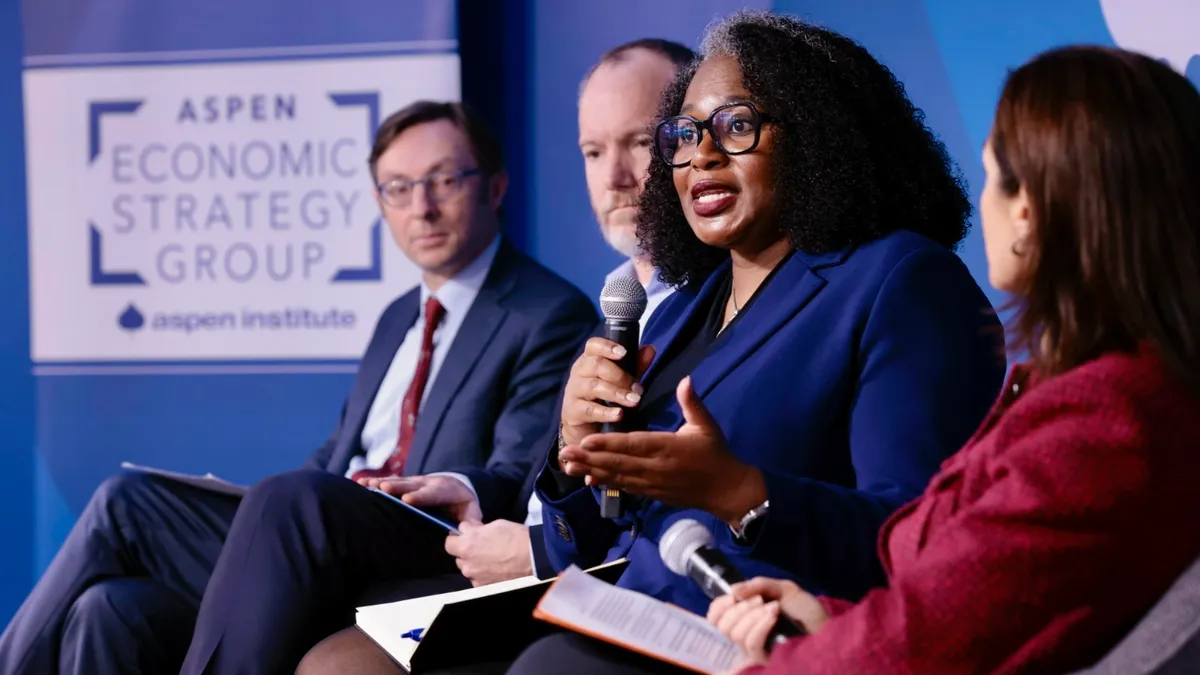WASHINGTON — High-dosage tutoring has the potential to close learning gaps created by the COVID-19 pandemic, but educators and policymakers need to act with urgency or students' future earnings potential could be in jeopardy, panelists said at a gathering Wednesday hosted by The Aspen Economic Strategy Group.
While declines in student test scores and grade-level achievement should be of pressing concern, students who don't catch up will fall even further behind in future years, leading to reduced lifetime earnings.
For the 50 million children enrolled in public K-12 schools, this could mean an average of 2% to 9% in lower income, calculating to a collective $900 billion loss in future earnings, according to a paper published Nov. 8 by The Aspen Economic Strategy Group.
Pandemic learning loss "is the biggest problem facing America that nobody's talking about," said Jens Ludwig, co-author of the paper and faculty co-director of the University of Chicago's Education Lab. "I think that long-term risks of this — the long-term consequences — are really being underappreciated."
He added: "It is not just a short term dip in test scores that we're worried about. The concern that we have is that kids are being permanently put off track."
If schools implement high-dosage tutoring with consistency and use evidence-based practices, such as multiple school-day sessions per week, it can be an effective intervention, panelists said. That’s especially the case for students who were disproportionately impacted by extended school closures and other hardships during the pandemic, they added.
High-dosage tutoring has other benefits in addition to academic support, according to Nakia Towns, chief operating officer at Accelerate, an organization that conducts research and provides grants for learning recovery efforts. For instance, it can help build student-school relationships and create more diversity among the adults in school buildings.
Towns, a former deputy superintendent at Georgia’s Gwinnett County Public Schools, pointed to school districts that have developed large-scale high-dosage tutoring programs. Baltimore City Public Schools, for example, provided this type of tutoring to 15,000 students in the 2022-23 school year. This year, the district expects to offer these tutoring services to 20,000 students by working with more than 14 tutoring providers in addition to having district-led services, Towns said.
'Quitting at the finish line'
While research points to benefits from high-dosage tutoring, operational and financial challenges can impede this work, the panelists said.
For example, high rates of chronic absenteeism are a barrier to helping students get back on track, said Nat Malkus, a senior fellow and deputy director of education policy studies at the American Enterprise Institute.
Funding is another roadblock, said Ludwig. With many tutoring programs just now hitting their stride and with federal emergency relief funding set to expire in September 2024, it seems like the country is "quitting at the finish line," he said.
And there are operational hurdles as school administrators try to figure out how to add time for tutoring within an already packed school day — and as schools face teacher shortages, several panelists said.
"We need to give schools more time, more money and more accountability, sort of a nudge or a push, whatever you want to call it, to do the hard things that'll really help kids," Ludwig said. "You should think about this as an investment in long-term economic growth."
Regarding accountability for schools and districts, Towns said outcomes-based contracts for tutoring providers could help build mutual accountability for schools and providers. "I think a lot of people are wanting to highlight that we're all aware that there's no money to waste," and everyone wants to ensure students are getting the services they need, Towns said.
She added: "We've got to keep leaning into this, and it's going to take our collective commitment beyond just educators. All of us have to collectively commit that we're going to use these strategies to help catch kids up.”







 Dive Awards
Dive Awards






